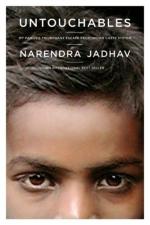
|
| Name: _________________________ | Period: ___________________ |
This quiz consists of 5 multiple choice and 5 short answer questions through Section 4: "Part Four: The Tentacles of Caste".
Multiple Choice Questions
1. In "A Long-Running Play and the Emergence of Caste in America," what does Wilkerson say Americans want to dismiss as a "sad, dark chapter" of American history (43)?
(a) Slavery.
(b) The Jim Crow era.
(c) The Trump presidency.
(d) The Colonial treatment of Blacks.
2. On page 6, Wilkerson refers to white "preeminence." What quality is she referring to?
(a) Using language and mannerisms that indicate superiority.
(b) Devotion to tradition or already existing institutions.
(c) Having the highest rank or position.
(d) Unjustified rage.
3. In "Chapter Twelve: A Scapegoat to Bear the Sins of the World," what does Wilkerson imply is true about the American response to the 2013 Ebola outbreak?
(a) That Americans withheld antiviral treatment from Africans.
(b) That Americans did not care as long as it was confined to primarily Black communities.
(c) That it only became a priority once Americans became sick.
(d) That American aid was designed to confine the disease to Africa.
4. In "Chapter Fourteen: The Intrusion of Caste in Everyday Life," Wilkerson relays the story of a Black woman who visits a new white neighbor. What is the white neighbor's response?
(a) He calls the police and reports and intruder in his home.
(b) He assumes that she is trying to steal the packages that he has on his porch.
(c) He assumes that she works for the dry cleaners he is expecting to pick up his clothing.
(d) He calls for his wife, because he assumes that she is there to apply for their nanny position.
5. In what year did Alabama repeal its law against interracial marriage?
(a) 1920.
(b) 1967.
(c) 2000.
(d) 1866.
Short Answer Questions
1. To what part of history does Wilkerson explicitly link the Electoral College?
2. At what famous Alabama bridge did the police violently attack peaceful protesters on their way to Montgomery?
3. In the opening anecdote of the book, what escapes from the melting permafrost?
4. What social trend does Wilkerson link to the 2016 election?
5. In "Pillar Number Five: Occupational Hierarchy: The Jatis and the Mudsill," what is the rhetorical purpose of including the Hammond quotes?
|
This section contains 422 words (approx. 2 pages at 300 words per page) |

|




